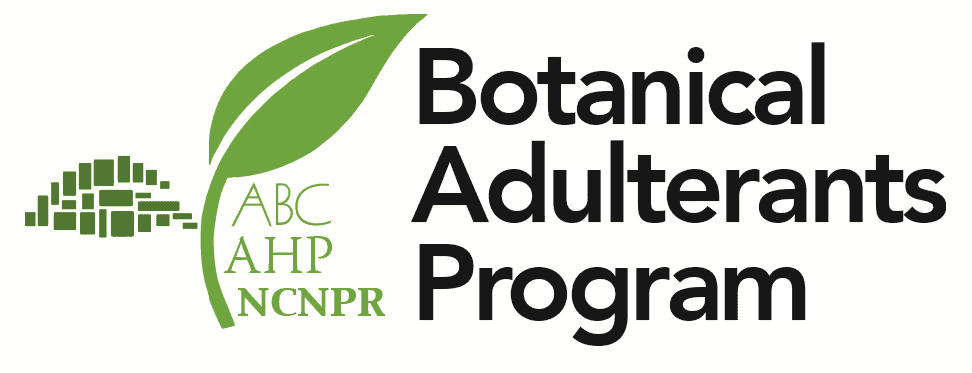Botanical adulteration Reviews

various botanical powders
Herbal adulterations have caused a sensation in the dietary supplement industry over last week. The New York attorney general demands that several botanical supplements labeled as echinacea, garlic, ginkgo, ginseng, saw palmetto, St. John¡¯s wort, and valerian found at major retailers including GNC, Walmart, Target and Walgreens should be recalled and removed from market due to quality problems by selling fraudulent and potentially dangerous herbal supplements.
The report found out that 80% of the products did not contain any of the herbs on their nutritional labels. The tests demonstrated that pills labeled medicinal herbs often contained nothing but cheap fillers like powdered rice, asparagus and houseplants, and in some circumstances substances that could be dangerous to those with allergies.
Whether DNA barcoding technology is an appropriate or validated test for determining the presence of herbal ingredients in finished botanical products is still in debate. Many botanical associations such as AHPA(American Herbal products associations, The American Botanical Council (ABC), etc are doubting the DNA barcoding’s accuracy in identifying and testing herbal compounds since some DNA damage or removal occurs during manufacturing process. However, this sensation is once again shining a negative light on the dietary supplement industry.
Today we are not talking about DNA barcoding tech, but the adulteration phenomenon itself. As a manufacturer and supplier of herbal extracts, standardized botanicals in China, Herb Nutritionals Co., Ltd is to expose the inside news of common herbal adulterations. The below is a list of the most common botanical adulterations:
| Number | Product name | Adulterant |
| 1 | Black Cohosh | Actaea (syn. Cimicifuga) from China |
| 2 | Bilberry Extracts | anthocyanosides from unrelated plants, such as elderberry (Sambucus nigra, Caprifoliaceae), or Red dye #2 (amaranth dye) |
| 3 | Grapefruit Seed Extract | Benzalkonium chloride, benzethonium chloride, triclosan, methyl paraben, or any other synthetic antimicrobial agent |
| 4 | Ginkgo Biloba extract | flavonol glycoside from rutin or quercetin |
| 5 | Green coffee bean extract | chlorogenic acid (CGA) from cheap source of Mulberry Leaf; Bamboo, Eucommia Ulmoides extract, HoneySuchle Flowers |
| 6 | (Chinese) star anise (Illicium verum) fruit | Japanese star anise (Illicium anisatum) fruit |
| 7 | Hoodia gordonii | Various powders possibly including Opuntia spp. and other Hoodia species |
| 8 | Glucosamine/Chondroitin products | seaweed-derived materials |
| 9 | Saw Palmetto | palm oil |
| 10 | Tribulus terrestris | Added salicoside or salicin from White willow bark extract |
Adulteration happens when greedy manufacturers and suppliers are driven by economical advantages, however, the quality is not guaranteed.
There are simple adulterations by adding fillers, or inert material to add fill weight. Maltodextrin and extracted marc are the most popular fillers in this category, particularly in the ratio extract products. Sophisticated adulterations are also very common in various supplements.
Types of adulteration in herbal supplements
1.Replacement with low quality Variations
Because of morphological resemblance towards the authentic drugs, different inferior commercial types are utilized as adulterant which might have chemical or therapeutic potential as that original natural drug e.g. Arabian Senna (Cassia angustifolia), dog Senna (Cassia obovata) and avaram (Cassia auriculata) happen to be accustomed to adulterate Senna (Cassia senna) Japanese ginger root (Zingiber mioga) to adulterate medicinal ginger root (Zingiber officinale).
2.Adulteration by man-made Substitutes
To supply the overall form and search of numerous drugs, things are unnaturally manufactured and therefore are utilized as substitute from the original one, e.g. artificial invert sugar for honey paraffin wax after yellow coloration replaced for bees wax.
3.Adulteration by Adding useless Heavy Materials
A sizable mass of stone combined with Liquorice root, bits of limestone are located in asafoetida and lead shot has happened in bits of opium etc.
4.Addition of Synthetic materials
Sometimes to fortify inferior natural products, synthetic principles are added e.g. adding citral to oil of lemon; benzyl benzoate to balsam of Peru etc. Or synthetic resveratrol to natural resveratrol 98%. Synthetic curcumin to natural curcumin 95%. Natural products are increasingly popularly been synthesized in lab to work in the same effects. However, there are have great price differences and side effects of synthetic drugs are huge and unknown.
Then, what is the best way to avoid been adulterated from the raw materials of ingredients? Adulteration may happen every day, and cooperation with trust-worthy manufacturers and suppliers is the best policy. Herb Nutritionals Co., Ltd is one of your best options. We only manufacture and supply ingredients that we trust and belive.

